Can project managers solve Australia’s construction disruption?
Why integrating program and change management is key
 Navigating a world of disruption Summer 2022
Navigating a world of disruption Summer 2022
Building a shared understanding of success
What can be done about the skills shortage? How to change recruitment and organisational culture
Paradigm Shift, Summer 2022
Interested in contributing to the next edition?


Paradigm Shift is published quarterly. Calls for articles for the next edition will be made approximately 45 days before publication. Please see the back page for more details on how you can feature in our next edition.
 Editor/Content Marketing Manager
Helen O’Neill
Designer Gray Design Group
Contributors
Aaron Hudson MAIPM CPPE
Editor/Content Marketing Manager
Helen O’Neill
Designer Gray Design Group
Contributors
Aaron Hudson MAIPM CPPE



Message from the Acting CEO
Simon KaleskiOur new report with KPMG, The state of project management , highlights the key findings from a survey of over 300 diverse Australian project professionals, with just 32% saying their projects were delivered on time most of the time, and 73% saying their projects experienced staff shortages.

We’ve dedicated this edition to helping project professionals and organisations navigate the disruption – the supply chain challenges, the new ways of working, and the skills shortages. Lecturer and researcher in supply chain management, Flavio Macau explores the factors contributing to the supply disruption and outlines a solution that’s in the hands of project managers. We also have Dr Angela Lecomber FAIPM CPPD interviewing Geoff Rankins FAIPM CPPD to find out how the project profession must keep challenging their thinking and consider disruption an opportunity with the potential to create better outcomes.
What should organisations be doing about the skills shortage? Jody Blinco and Petria
Paynter look at what can be done to fill the skills gap and win over the right project people. They discuss organisational culture, how recruiting needs to change, and why mentoring is crucial at this time.
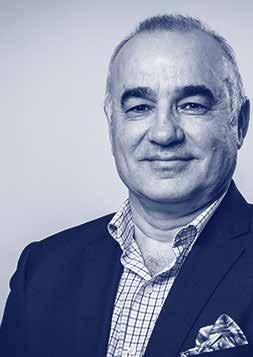
We hope you benefit from reading this edition, and go into the new year with some new ideas to kickstart activities.
Have a restful break and we hope you enjoy some well-deserved time with family and friends during the holiday season.
Simon KaleskiActing CEO, Australian Institute of Project Management
As we head out of 2022, we continue to grapple with the effects of the COVID pandemic and extreme weather events.
In the news
Workplace hot topics
With hybrid working becoming the norm, many gen Z professionals who began their careers during lockdowns are romanticising going into the office.
According to a story by LinkedIn News , it’s chance for them to make inspirational social media content as they stroll through the city in their corporate clothes, grabbing their coffees before hitting their desks.

On the flipside, workers who are back in the office are getting used to ‘deskbombing’ all over again. The phrase ‘deskbombing’ has been coined to describe when someone approaches their desk unexpectedly to have a chat. Business Insider says workers are divided on whether it’s more efficient than emailing, or whether they find it disruptive. After years of having the option to silence notifications when they need to get their head down, ‘desk bombing’ may just be something they need to get used to again.
New report: The state of project management in Australia

For the fifth year running, the AIPM joined forces with KPMG Australia for an annual snapshot of the Australian project management landscape, The state of project management in Australia. This year’s report highlights the key findings from a survey of over 300 diverse Australian project professionals across July and August. In addition to maintaining consistency with previous years’ questions to identify any longitudinal trends, the survey included questions on salary for the first time this year, as well as taking a pulse on current trends in the market.
With over 73% of respondents claiming projects experienced staff shortages, 52% reporting delays due to sourcing key skills and 62% expecting ESG requirements to influence their projects and programs in the future, it shows our community is dealing with greater complexity and uncertainty, requiring increased responsiveness and resilience. To learn more, access the report via our website.
With hybrid working becoming the norm, many gen Z professionals who began their careers during lockdowns are romanticising going into the office.
Project Management Achievement Awards
The state-based winners of the Project Management Achievement Awards (PMAAs) were announced during October and November, recognising outstanding project management across industries in Australia.
A huge congratulations to all our winners for their success, and for what they have produced for Australian communities.
The national winners will be announced on Friday, 24 March 2023 after the National Summit, Leading through disruption. Register now to attend and empower your project team to aspire to a higher level of project execution through networking with those who have achieved a PMAA accolade.
Thought leadership
A once in a generation opportunity to achieve transformative outcomes at scale

We are experiencing a once in a generation opportunity to achieve transformative outcomes at scale from the current global, shortterm infrastructure stimulus spend, and project professionals are on the front line. Aaron Hudson MAIPM CPPE looks at how the new wave of infrastructure projects targets transformative outcomes for people and the planet, and why success depends on tenacious project leadership.
By Aaron Hudson MAIPM CPPEThe global infrastructure spend
Governments worldwide have turned to infrastructure spending to drive economic recovery post-COVID-19. The stimulus packages represent a once-in-a-generation opportunity to achieve significant transformative outcomes with a global impact through the high-calibre delivery of mega-projects and programs.
• US$3.2 trillion: Infrastructure stimulus announced by G20 governments between March 2020 and August 2021 (source: Beyond the Baseline, Jacobs). This includes US$26.3 billion announced in Australia with by far the largest chunk –some 65% – going to the transport sector (source: Global Infrastructure Outlook)
• US$94 trillion: Further investment needed over the next 20 years to meet the forecasted infrastructure deficit (source: Global Infrastructure Outlook)
As project leaders, we’re the custodians of best practice, responsible for delivering the benefits of this once-ina-generation investment. We need to take charge with a sense of urgency and strong leadership to realise these transformative outcomes.
Expectations are changing
In the past, project delivery focused on minimising infrastructure development’s impacts, for instance, minimising diversity loss or social dislocation. Now, the expectation is that we derive multiple positive effects throughout project delivery and leave an enduring legacy. The positive social and environmental outcomes are equally important as the economic benefits.

Blended infrastructure in action
Brisbane 2032 Olympic and Paralympic Games
Hosting Brisbane 2032 presents an opportunity for Queensland to create legacy outcomes over the next 20 years – 10 years before and 10 years after the Games. Their plan will drive economic, social, cultural, environmental, and built environment opportunities that ensure lasting benefits before, during and after the Games.
Source: Brisbane 2032 Olympic and Paralympic Games Legacy Plan
The outcomes required through infrastructure are expanding
In November 2021, the Global Infrastructure Hub publicly launched the Transformative Outcomes Through Infrastructure initiative. The initiative examined the stimulus spending announcements of G20 countries at the
height of the pandemic and the outcomes those investments were targeting. The GI Hub found that G20 governments are targeting six transformative outcome categories through infrastructure stimulus. These categories are broadly aligned with the United Nations Sustainable Development Goals (UN SDGs).
Category Overview of transformative outcomes targeted by category
Environmental sustainability and regeneration
Resilience
Inclusivity
Enhancing the environment by regenerating ecosystems and biodiversity, maximising resource recovery and eliminating use of finite resources, and becoming carbon positive.
Building the capacity of individuals, communities, institutions, businesses and natural and built systems to survive, adapt, grow and thrive no matter what kind of chronic stresses and acute shocks they experience.
Improving the quality of life and wellbeing of individuals and reducing inequalities and inequity in alI its forms.
Specific transformative outcomes contained in the category
Circularity Environmental regeneration Low carbon transition Pollution reduction
Disaster and climate adaptation Social cohesion
Inclusive mobility Digital connectivity Affordability and access to service
Research and Development (Disruptive Innovation)
Digital/ Infra Tech
Economic development
Creating new products and services for individuals and businesses which are more useful and valued, thereby developing an enduring innovation culture.
Achieving rapid technology advancements as a result of infrastructure either scaling-up or advancing a new or existing secure (physical, information, operational) infrastructure technology.
Supporting sustained and diverse growth that drives job creation and rise in living standards.
Disruptive innovation
Digitalisation Cyber-security Digital connectivity
Job creation and economic growth
Six categories of transformative outcomes through infrastructure stimulus (source: Beyond the Baseline, Jacobs)
The GI Hub’s examination found the bulk of infrastructure stimulus already seeks to deliver against at least two of the above transformative outcome categories per investment.
However, for infrastructure to realise its full potential and transformative obligations, infrastructure programs and projects must embrace as many, if not all, of these transformative outcomes at every investment opportunity.
Why the urgency?
While the forecasted investment speaks to a 20-year horizon, there are reasons to believe it may be a limited-time offer. This could translate to a limited window to realise transformative outcomes at the pace and scale currently possible.
As the global COVID-19 pandemic took hold, governments around the world rapidly committed to stimulus initiatives designed to not only drive economic recovery postCOVID-19 but also to make the world more sustainable, resilient, prosperous, and inclusive. The Global Infrastructure Hub estimates this stimulus could represent a 45% increase in the average yearly infrastructure investment across the G20 if spent between 2021 and 2023.
However, we are seeing initial drivers for this spend being progressively overtaken by more recent, and in some part of the world just as calamitous, events. Global resource capacities are becoming stretched and medium term inflationary and supply chain pressures are significantly impacting project budgets. The desire and political will to spend at the current pace and scale may be eroded just as quickly, as delivery costs mount and returns on investments deteriorate. This increases the need to urgently define and value the return from transformative outcomes as part of infrastructure investment.
The growing global talent shortage further compounds the capacity to achieve transformative outcomes within the available funding period.
We have other reasons to adopt a sense of urgency, the most important being the pressing need to realise the transformative outcomes themselves.
Cyber security Wellbeing
Cyber security must be considered as a transformative outcome of program delivery. Secure environments can be achieved by addressing physical, information, and operational technology security profiles in an integrated manner.
Projects are expected to improve individual and community wellbeing. Wellbeing determinants include education, skills, employment, health, housing, income, and quality of and access to the natural environment.
Environment
There is an urgent need to avoid global warming beyond 1.5⁰C (compared to the preindustrial period) and actively reduce carbon emissions. Every infrastructure project must strive to meet or exceed net-zero targets.
The opportunity is a challenge for leadership
“We won’t have a successful project unless a focus on the future impact is at the heart of all our decisions.”
Realising transformative outcomes at every investment opportunity is not easy. Our industry has a strong bias towards rewarding cost-efficient delivery over increased benefits. Governments are routinely challenged for overspending on projects, with little question of whether the return on investment compensated for the increased spend, or whether they had met their carbon budget. Commercial project delivery organisations are geared to maximise profits to shareholders, not to maximise benefits on the projects they deliver.
These challenges must be addressed through strong leadership at government, stakeholder, owner, and delivery team levels. We need visionary political, infrastructure, project and community leadership that takes responsibility for achieving transformative outcomes, and steers teams effectively both during and after delivery to create positive, lasting legacies.
How can we do this?
A tricky question, best answered by starting with two much simpler questions:
1. What leadership attributes do current and emerging infrastructure leaders need to lead the charge on realising transformative outcomes through infrastructure?
2. How can leaders acquire these attributes?
Our team at Jacobs explored each of these questions in detail in our recent paper, Beyond the Baseline Part 1: Leading infrastructure teams to deliver transformative outcomes . We outlined several key attributes and abilities that we believe collective infrastructure leadership must possess to instil the culture and behaviours needed to embrace and adopt strategies that will realise transformative outcomes.
We also outlined a few strategies that can be implemented at a jurisdictional/ organisational level and at a program/ project level to help develop these attributes in our people. Committing to developing adaptable and resilient leaders by providing ongoing professional training and development for people is key.
We won’t have a successful project unless a focus on the future impact is at the heart of all our decisions.
SmallwoodCEO of UK’s Infrastructure & Project Authority
Source: Delivering sustainable infrastructure: Insights from industry leaders, McKinsey, September 2021
NickKey attributes and abilities that collective infrastructure leadership must possess
✓ Fully appreciate the complicated and dynamic nature of the strategic operating environment
✓ Have clear values and communicate these values
✓ Be able to mobilise private capital and partner with an array of potential investors
✓ Be exceptional at building and leading diverse teams
✓ Have the experience needed to deliver complex projects
✓ Have an entrepreneurial spirit
✓ Be politically astute and able to collaborate across government(s)
✓ Be excellent communicators
✓ Implement agile organisational structures with clear plans for resourcing both now and in the future
✓ Be data and analytics driven
✓ Be comfortable with disruption and change
✓ Commit to a learning-based approach
✓ Create an environment that values and facilitates cooperative relationships with partners.
Let’s seize the day
It’s exciting to be at the forefront of this once in a generation opportunity to achieve transformative outcomes at scale. There is so much opportunity within our grasp, but it will take deliberate effort and strong leadership, acting with urgency to realise it. We believe the AIPM, and all of us as members, have a significant role to play. As the peak industry body in project management, and as industry professionals, it is incumbent upon us to guide our governments, stakeholders, owners, and delivery teams to take advantage of this once-in-a-generation opportunity.
For further reading, we explore this topic in more detail in our Beyond the Baseline series.
... as industry professionals, it is incumbent upon us to guide our governments, stakeholders, owners, and delivery teams to take advantage of this once-ina-generation opportunity.
Aaron Hudson MAIPM CPPE is the Asia Pacific Regional Solutions Director for Project and Program Management at Jacobs. He has led strategic projects, programs, and portfolios worldwide for over 20 years.

Thought leadership
Building a shared understanding of success
Creating a shared view of what success looks like is critical to effective change management, but what success looks like can vary drastically. Carol Morley looks at how integrating project/program management and change leadership at the project or program initiation stage can build a shared vision of success.
By Carol MorleyProsci’s Best Practices in Change Management states that integrating project and change management can increase delivery of project outcomes by 17%.
The research identified that a main contributor to increasing success is creating a shared objective, one that aligns the work and engages the people. Experience shows that the earlier the integration begins, the more enduring the benefits and the stickier the change will be.
The importance of having a shared view of success applies to program management as well, when the vision (the ‘what’) is known, but the ‘how’ is yet to be defined across the supporting projects.
Program managers (or project managers) can actively build this shared understanding by ensuring three key elements are included in program initiation and planning stages.
Start with why not what
Transformations are 8 times more likely to succeed
when senior leaders communicate openly and honestly about what is changing and why, according to McKinsey’s article, How to beat the transformation odds
To be most effective, this focus on why needs to start at program initiation and inform scope and measurements of success.
Most programs hold a kick-off workshop to get everyone on the same page in terms of objectives, governance, schedule, and funding.
Program managers and sponsors can use the kick-off to help the team understand why the program exists and build a shared understanding of what success will look like. Remember that not everyone is coming from the same starting point, so
the program manager should regularly check with the team and surface any questions.It is only after the ‘why’ is understood that the program should move to defining desired outcomes and success criteria. Equipped with vision clarity, team members are more likely to identify relevant and appropriate success measures.
Understand what program success really means for you (and me, and us)
Program success factors are often defined and shared at the program level, while change most often happens at the individual or team level. This creates a gap between program intent and team member experience, which can fuel confusion, misperceptions, and disengagement.
As Ron Ashkenas shares in his Harvard Business Review article, To Lead Change, Explain the Context, team members are more likely to see the bigger picture and engage constructively when they know how the change will affect their work.
The same is true for program teams –taking the time to discuss what the program is looking to achieve and why, can lead to better outcomes through shared objectives and clearer view of success. Program kick-off is the optimal time to begin that contextualisation and sense-making process, with the program manager playing a critical facilitator role.
Program managers can use the success criteria definition process to build and reinforce program understanding by integrating three change management practices:
Involve the team in validating success measures – this helps build ownership and reinforces the program purpose. When success measures are defined solely between the program manager and sponsor or steering committee, the opportunity is missed to create shared understanding.
According to McKinsey’s Transformational Change Survey, team members are five times more likely to feel ownership when they participate in co-creation rather than just told a solution.
Avoid defining success measures as standalone criteria, where each needs to be achieved in isolation. Instead, view the measures holistically, acknowledging importance of one measure may go up or down based on its relationship with another measure. One way to do this is to rank success criteria in priority order, or assign a percentage based on how important each element is to program success. This then provides a starting point for inevitable discussions around delivery trade-offs.
Use scenario testing to refine prioritisation and uncover any confusion around what the program looks to achieve. Experience shows this step is often skipped in the interest of time, but it is invaluable in surfacing personal and organisational assumptions around how a program will be delivered and what success looks like in practice.
Lead the change
Change leadership is not a role restricted to sponsors and change managers; everyone involved in your program can be a change leader. Once it is known in the organisation that an individual is on the program team, it is likely they will be asked questions about the program – what a fantastic opportunity to spread the vision of success!
When a critical mass of leaders can contextualise the change and create an environment where team members can connect to program purpose, the likelihood of program success increases significantly. So how can the program manager support team members in embracing their roles as change leaders from initiation?
1. Set the expectation that you, and all program team members, can articulate the program vision and success measures in engaging, plain language that anyone in the organisation can understand. Avoid corporate speak, function-specific jargon, or high-level marketing phrases that can dilute the clarity and perceived authenticity of your message. Work with your communications manager or engage an external facilitator to help the team build impactful storytelling skills.
2. Empower team members to share their understanding of the change within the context of the larger narrative. According to the McKinsey survey, using aligned communication narratives can increase success rate of transformation by 3.8 times. Consistency is key, but resist the urge to over-script; instead, support change leaders with dedicated time and expert advice to help them develop and practice their own story until they can speak comfortably and authentically about what the program wants to achieve.
Clarity brings success
Building this shared vision of program success, and the ability to contextualise and communicate that vision, is especially critical for cross-functional and multi-year programs where there may be turnover in team members and sponsors over time. Ensuring everyone experiences this process of understanding and contextualising program vision will help build program continuity and increase probability of successful delivery. Program managers are uniquely placed to make certain this occurs.
Carol Morley is a senior change and transformation leader with over two decades experience partnering with C-suite business leaders across sectors and sites. As a Principal Consultant at ENTHEOS Consulting, Carol works with businesses to transform their operating models and improve customer and employee experiences.
Disruption The upside of disruption
Project professionals often view disruption as a negative, but it’s time to flip that perception. AIPM Fellow Dr Angela Lecomber FAIPM CPPD and Fellow Geoff Rankins FAIPM CPPD talk about how project professionals must keep challenging their thinking and consider disruption an opportunity with the potential to create better outcomes.

What is disruption?
Disruption has traditionally been considered problematic. This changed with Clayton Christensen’s theory of disruptive innovation (considered to be the most influential business idea of the early 21st century, according to the Harvard Business Review ). This article takes a broader view of disruption, whether caused by technological or business model innovation or some other cause.
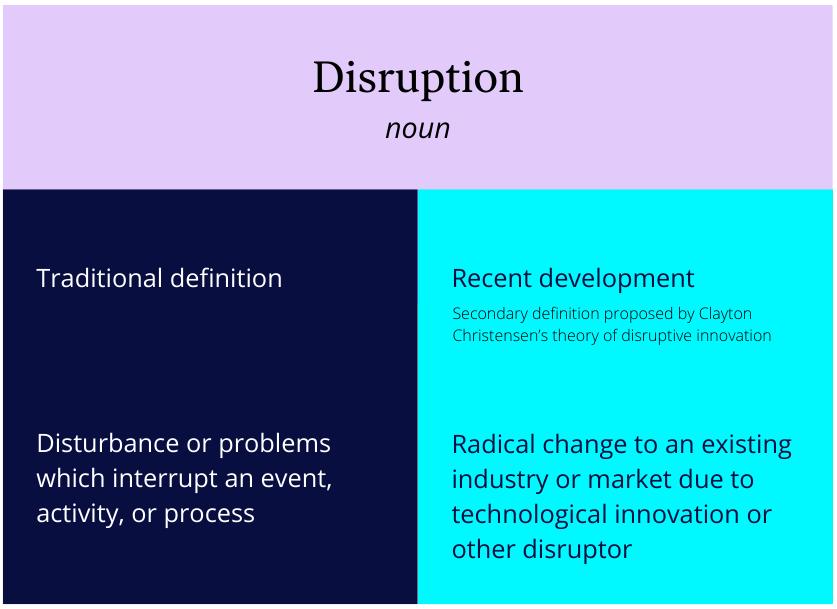
Disruption as a disturbance in the project profession
Angela: Disruptions have been a constant feature of the COVID era. What are the main disruptions you’ve seen?
Geoff: It depends on what you mean by disruption. In project management, and engineering projects specifically, it’s a defined term meaning that a plan isn’t expected to meet its target. It’s considered a break or interruption in the normal course of an activity or process.
During the pandemic, the most obvious have been supply chain disruptions affecting companies that import or export products. Companies are reconsidering ‘just in time’ approaches which we could say are now ‘just out the window’.
There have also been many other COVID related disruptions including the sudden switch to remote working, followed by quiet quitting and the great resignation. This has resulted in new hybrid working models and innovative strategies to attract and retain staff.
The causes of project disruption
Angela: So, do project variances imply that the project has been impacted by a disruption?
Geoff: Not always. It depends on the scale and source of the variance. Often variances arise from known risks or issues that should have been expected but weren’t considered. Other times, the variances arise from unexpected causes.
Even before this pandemic, I rarely completed a project on time and on budget, except for one very small project that finished on budget but one week late. My most successful projects either finished well under or well over on one or both metrics.
Angela: What leads to project disruption? Is there a taxonomy or categorisation for this?
Geoff: Generally, there are three broad causes of disruption to projects: (1) unforeseen or foreseen risks that become
issues (such as the pandemic), (2) risks whose exposure grows larger than the organisation’s risk appetite or risk capacity, and (3) general uncertainties that might exist in the project’s environment but aren’t treated as quantified risks.
However, in my experience, minor risks and minor issues in projects are not considered disruptions; they’re almost expected. Project managers can prepare for disruptions by developing a risk management plan and contingency budgets in time and money wherein they anticipate most risks and prepare strategies to deal with them.
Angela: Can a disruption arise inside a project or programme?
Geoff: Sometimes a new approach to a project or its management might cause disruption. For example, I’ve seen troubled projects attempt to adopt ‘Agile’ as part of their recovery efforts.
Angela: True, but there are other ways to view disruption. Disruption caused by projects can change an organisation. Project stakeholders are likely to be impacted or affected by the deliverables of projects in a variety of different ways.
Geoff: And projects affect BAU, and in turn, changes in BAU can disrupt the same project.
Disruption as a silver lining
Angela: Disruptions are generally seen as something to be avoided, but disruptions don’t always have negative impacts. What are your thoughts on this?
Geoff: I agree. While a disruption may damage a project’s expected value, it’s equally possible a disruption may increase that value. This ties in with newer thinking from ISO 31000 and M_o_R 4 (Management of Risk version 4), where risk management has two purposes: to protect expected value and create new value. For example, it might be initially disruptive when organisations adopt new project management methods, but it should improve outcomes in the long run.
How Geoff found opportunity in disruption
• The disruption: Geoff was running a public sector programme when the government expected a significant increase in public servants’ salaries.
• The challenge: Managing a 20% reduction in the programme’s budget.
• The opportunity: Rather than just decreasing each project’s budget by 20%, Geoff focussed on value and looked for low-value projects that could be terminated to reduce expenditure.
• The outcome: Geoff significantly increased the programme’s valuefor-money proposition.
Creating value through disruption
Angela: What should the focus be in dealing with disruptions?
Geoff: A focus on project metrics such as timeframe and budget often distracts from the business purpose of a project. The approach should be a two-fold focus on protecting value (from threats) and creating value (from opportunities).
For example, if an opportunity would increase a project’s costs by 20% but also increase the value of the project’s outcomes by 100%, then protecting the project’s cost budget is not in the organisation’s best interests.
While it’s important to focus on the mechanics of responding to a disruption, it may be valuable to first step back and look for opportunities and the silver lining.
Geoff RankinsReframing risk
Angela: Do we need to reframe the way we look at risk?
Geoff: When people talk about risk, they generally mean threat. Their mindset needs to accommodate the concept of opportunities. Current project management methodologies such as PRINCE2, MSP and M_o_R 4 present risks in a binary way: either as a threat or an opportunity.
But why can’t a situation be both a threat AND an opportunity?
For example, suppose a project had been commissioned, and its plans assumed it would use a particular tool. Then, a much better tool comes onto the market at some time during the project’s life. The project’s stakeholders could regard the innovation as a threat to the approved plans and associated outcomes. Alternatively, or perhaps concurrently, they could view the innovation as an opportunity to increase the value of the project to the organisation, even though this would mean major disruption to the project’s existing plans and outcomes.
Project spotlight: The Sea Cliff Bridge at Stanwell Park
• The threat: Geotechnical experts warned of the potential for collapsing cliffs falling on traffic on the highway between Sydney and Wollongong.
• The opportunity: Rather than just addressing the direct threat, authorities saw an opportunity to create a bridge out over the ocean.
• The outcome: The Sea Cliff Bridge at Stanwell Park is now a popular tourist attraction and driving experience. An opportunity was exploited that reduced the threat at the same time.
Looking for opportunities in disruption
Angela: So, should we always be looking for the silver lining of disruptions?
Geoff: Absolutely. In addition to focusing on addressing the immediate negative impacts of the issue or threat and using a band aid solution, stakeholders should look for opportunities to do something more. Dwight Eisenhower once said: “If you can’t solve a problem, enlarge it.”
How an engineering firm enlarged a problem to their advantage
• The disruption: An engineering firm was asked to respond to a maintenance tender, where they knew that the maintenance was currently being performed in a facility containing asbestos which the firm’s corporate policies would not condone.

• The opportunity: At face value, the firm could not respond to the tender. However, they took a broader view and decided to offer to demolish the existing facility and build a new facility that the firm would own at no expense to the tenderer.
• The outcome: They saw the opportunity to increase their maintenance rates at the next contract renewal or sell their facility to the tenderer at a significant profit.
The future of project disruption
Angela: So, will there always be upsides to disruption for projects?
Geoff: If mindsets don’t change, and if by disruption we mean ‘negative impacts,’ then there is no upside. But if ways of thinking can broaden, then opportunities to create value exist.
For example, suppose that most threats in an engineering project originate in one of the solution’s components. If stakeholders try to address each risk independently, they will spend a lot of time and money but may not address the root cause, which is that component. In a situation such as this, there is an opportunity to eliminate all risks directly relating to the component by replacing that component with something else.
For me, this quote sums up the attitude project leaders of tomorrow must embody: “We are all (sometimes) faced with a series of great opportunities brilliantly disguised as impossible situations.” Charles Swindoll
Dr Angela Lecomber FAIPM CPPD is a consultant with significant experience delivering innovative outcomes in a wide range of sectors, including Federal and Victorian government departments, local government councils, the Catholic Church and many private companies. Geoff Rankins FAIPM CPPD is CEO and lead trainer at Inspiring Projects. He helps organisations improve the value realised from their project investments through professional development and governance support.
Can project managers solve Australia’s construction disruption?

The construction boom is leading to severe material shortages in Australia, and there’s no end in sight. Lecturer and researcher in supply chain management, Flavio Macau explores the factors contributing to the supply disruption and outlines a solution that’s in the hands of project managers.
By A/Prof Flavio MacauWhy
Demand for building materials like timber and steel is skyrocketing while supply is dwindling.
Australia is about to reach the lowest point in log availability in decades according to the Australian plantation statistics and log availability report 2021 by the Department of Agriculture, Water and the Environment.
we’re experiencing a timber shortage
Prices are soaring
The Australia Bureau of Statistics reports that the prices of reinforced steel, structural timber, and steel beam increased by about 40% in 2022.
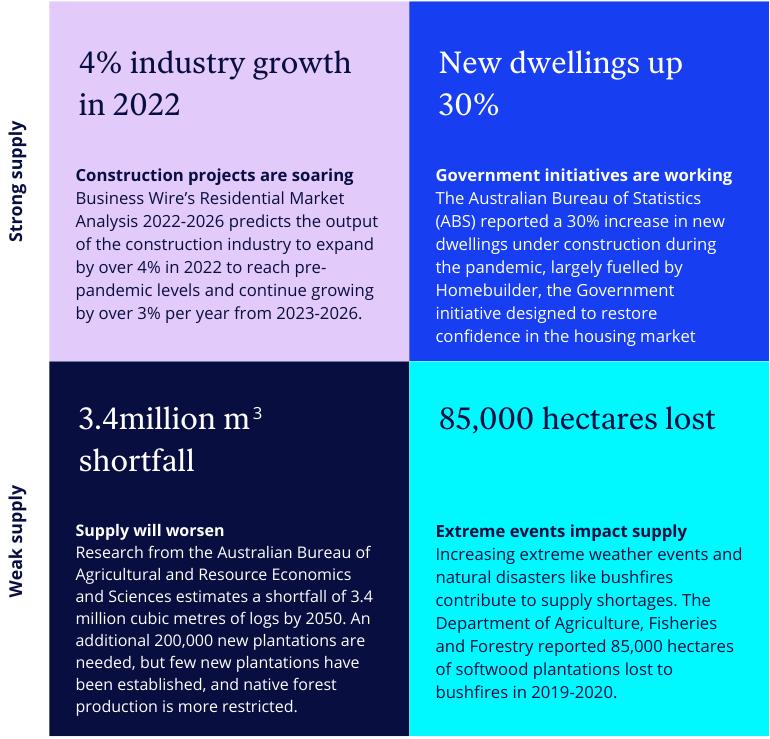
Timber has a 73% market share in Australia, while lightweight steel beams feature in 14% of home construction projects (source: Forest and Wood Products Australia). Average costs have been comparable, and the choice was more often about technicalities than price.
But the answer to the timber shortage isn’t a switch to steel because the steel industry is also going through a sharp increase in prices fuelled by low investment, troubled
supply chains, high energy prices, and the war in Ukraine.
•
BlueScope Steel prices are up by 38%: BlueScope Steel, the major player in the Australian light gauge steel framing market, increased prices by 38% this year, according to a report by Smart Company.
•
Dumping duties add pressure: A decision from the Australian Government in December 2021 to impose dumping duties of up to 20.9% on steel imports from Korea and Vietnam put extra pressure on the market.
Before the pandemic, the ABS’ Construction Cost Changes report estimated almost half of new residential dwellings would cost more to build than they were approved for, and now that number is close to 100%.
What does the future look like?
Demand for house construction will keep its momentum, with the federal budget targeting one million new homes from 2024 to 2028.
Supply-side budget measures (measures that the government takes to increase the availability or affordability of goods and services) are:
• $100m investment in research and development
• $10m for skills and training
• $86.2m for plantation establishment
• $112.9m for wood processing innovations
Project management is central to these initiatives if the construction industry is to make good use of the money.
Steel supply will increase: BlueScope plans to reline its No.6 Blast Furnace at Port Kembla. They are developing scope, cost, and timing with an indicative investment of over $700m. They are also working on innovative, sustainable alternatives.
A recent decision to cancel tariffs on steel pipes from China and South Korea opens the door for revisions of anti-dumping measures that can re-establish the flow of other steel imports.
What can be done now?
With no silver bullet on the horizon, project optimisation could be the key to mitigating the immediate problem.
While the future looks brighter, supply will continue to be constricted and prices will not ease in the short term. Building projects, which are taking an additional 10-12 weeks to be completed, will continue to face delays.
✓ Spending more time in the design process: While initially costly, design improvements can save tonnes of construction waste from going into skips. Many builders are locked in outdated practices focusing on implementation rather than planning, with little attention to waste reduction.
✓ Designing for efficiency must be the new norm: There is an urgent need for a better project material management process in the construction industry. New parameters are needed on the construction site to improve accuracy, so that procurement departments can stop over-ordering materials and start saving money.
✓ An increase in the use of prefab, size standardisation, and use of Design for Manufacturing (DFM) practices can significantly reduce the amount of timber and steel needed. Not only will these measures address the urgent need, but there will also be long-lasting benefits to the construction industry.
Don't miss our lineup of speakers





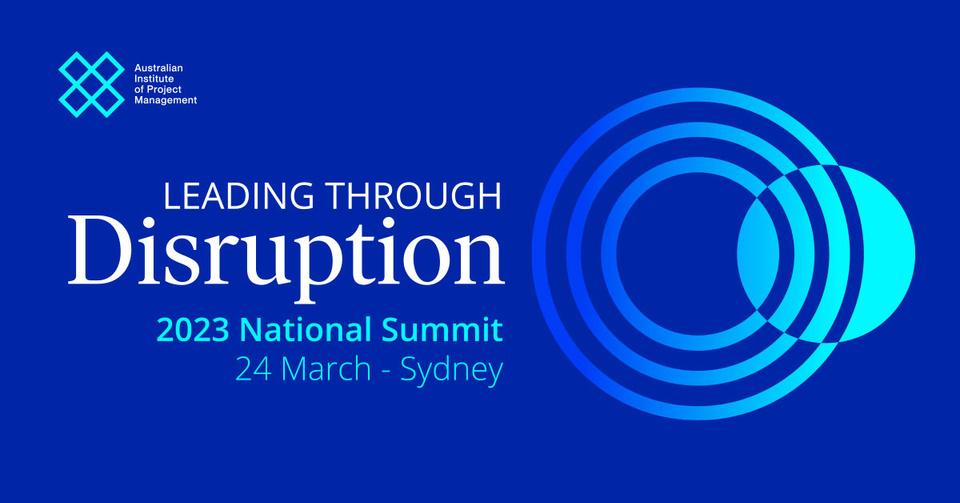
Topic:
Topic:
Topic:
Case study: Energy Queensland thriving in disruption

It’s an interesting time to lead projects at Energy Queensland. They’re on the frontline of multiple disruptive forces but are relentless in their ambition to create an energy future that unites and excites all Queenslanders. Danielle Abel shares the approach that’s seeing them flourish amid uncertainty.
By Danielle Abel DisruptionAbout Energy Queensland
Energy Queensland is the largest, wholly government-owned electricity company in Australia. They:

• Deliver electricity across Queensland through their ‘poles and wires’ businesses, Energex and Ergon Energy Network
• Sell the electricity to regional customers through their retail arm, Ergon Energy Retail
• Drive energy transformation through their sustainable energy division, Yurika
Powering through adversity
With so many external factors likely to impact your programs of work, how does Energy Queensland keep the lights on?
Whether it be supply chain limitations, material shortages, insufficient resources or severe weather events, disruptions can spell disaster to a program of work.
At Energy Queensland, our program includes over 10,000 distribution, transmission and maintenance projects, and the level of churn and volatility can be extremely challenging.
We believe the key to successful program delivery is flexibility and planning for change. Over the past five years, we’ve seen a continual increase in customer enquiry, so we’ve adapted program delivery to suit. It ensures we’re meeting the expectations of new customers and keeping existing assets safe and reliable.
Volume of negotiated customer applications 2020-2022 (source: Customer Market & Operations Department, Energy Queensland)Initiatives to combat disruption
With the increase in customer activity coinciding with rising disruptions, Energy Australia has implemented several successful initiatives:
✓ renegotiating performance indicators for the stock-on-hand budget
✓ increasing minimum stock holdings
✓ building a design bank so that we can pull work forward to backfill any gaps in our program
✓ making improvements to our customer connection offer processes to reduce cycle times ✓ major software improvements ✓ changes to the budget governance frame work to reduce effort where it does not add value
A careful blend of mechanics and dynamics
Energy Queensland focuses on the mechanics and dynamics of project delivery to achieve successful outcomes in the face of disruption.
• Mechanics such as utilising our processes, systems, and reporting, and
• Dynamics such as increased communication, collaboration between workgroups and demonstrating empathy towards our people.
While these initiatives aid our ability to adapt to an ever-changing program of work, as an electricity distribution company there are still times when the severity of disruptions results in widespread turmoil.
We didn’t plan for this
Cyclones, floods, bushfires, storms, and severe weather events are all a part of life in Queensland. Although we have many strategies in place for when these occur, the level of damage to our network and program of work is volatile and unpredictable.
In these trying times, our number one priority is repairing our network safely and getting communities reconnected. Mobilising crews of over 700 people to assist with cyclone recovery efforts or storm response is no mean feat, and it can disrupt our planned program immensely.
During periods of extreme disruption, demand for scant resources rises. People feel increased frustration in their efforts to deliver projects. At these times, we focus on assuming ‘best intent’ within our project teams and appreciate that with so many competing priorities, the right decisions won’t always favour our projects.
As project professionals, we must be adaptable and persistent with our plans to combat disruption to our program.
Embracing uncertainty
We live in a fast-moving world where change is the only constant. Disruption will continue to have a major impact on projects across every organisation.
As project professionals, we must be adaptable and persistent with our plans to combat disruption to our program. We must take time to review our shortcomings,
acknowledge and celebrate our successes and always endeavour to learn and improve how we manage work.
At Energy Australia, this adaptive thinking will help us energise Queensland communities and deliver on our promise to provide secure, affordable, and sustainable energy solutions, despite seemingly insurmountable odds.
Danielle Abel has been a valued member of the project delivery team at Energy Queensland for over 16 years. She’s currently responsible for co-ordinating distribution-based capital projects.
 Bowen restoration, Tropical Cyclone Debbie (source: Energy Queensland)
Bowen restoration, Tropical Cyclone Debbie (source: Energy Queensland)
Tackling supply chain disruption with the Integrated Delivery Partner model
Disruption from global supply chain shifts is forcing the infrastructure sector to reimagine previously successful processes. Mott McDonald’s advisory team explores the rise of the Integrated Delivery Partner (IDP) model and how it addresses supply chain limitations and accelerates procurement timelines in the post-pandemic world.
By John Dyson MAIPM, Simon Armstrong-Bayliss and Cristy JoelSupply chain disruption hinders existing and future programs

Australia’s geographic isolation was a boon during the pandemic. Now, it exposes us to compounding effects as the global supply chain shifts during our ongoing historic boom in construction and infrastructure. The infrastructure sector has been put on high alert. It’s becoming evident that these constraints will likely impact existing programs and the pipeline of projects announced across the country. Similar
constraints have been flagged in noninfrastructure policy and change programs.
Innovators are poised for success
With mega-projects becoming increasingly clustered, delivery of the transformational outcomes expected of this record pipeline will be weighted towards those capable owners that adopt novel approaches to addressing supply chain limitations and can accelerate procurement.
… for this record pipeline of investment to be delivered, substantial change will be required to the way infrastructure is planned, procured, delivered and managed… constraints in the sector are likely to continue to grow, compounded by the impacts of the COVID-19 pandemic on global supply chains.
Col Murray Infrastructure Australia, 2022

The Integrated Delivery Partnership model
One solution to the supply chain constraint that also accelerates procurement timelines is long-term collaborative enterprise relationships structured around outcomefocused portfolio/program delivery.
Already enjoying success across nationally significant, complex programs, the IDP model has been developed through collaboration across leading industry bodies and project proponents globally and in Australia.
A flexible delivery approach
The IDP model is a scalable and flexible approach to delivery, mobilising a diverse supply chain into a portfolio/program enterprise. It brings a broader client advisory and technical focus and an outcome-based commercial approach over longer durations than traditional approaches.
What is the role of the integrator?
The integrator role, and the IDP ecosystem that enables it, are scalable and adaptive.
✓ Mobilises the breadth of industry capability to the enterprise
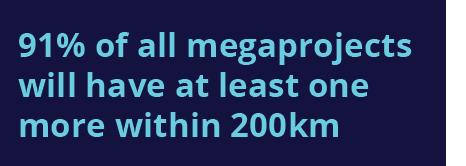
✓ Forms a collaborative leadership team with the client
✓ Works with the client to clearly define the long-term outcomes
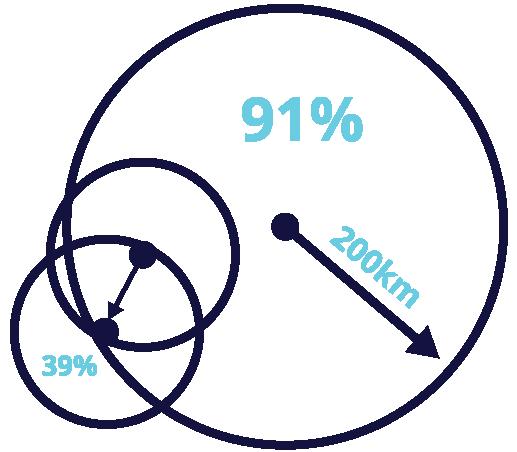
✓
Provides centralised portfolio visibility for insightful decision making
✓ Brings together advisory and technical skills toward outcome realisation
Different Integrated Delivery Partnership models
The IDP model’s flexibility allows it to be optimised depending on the program, organisation, and objectives throughout the program lifecycle.
Megaprojects statistics (source: Infrastructure Market Capacity, Infrastructure Australia, 2021)Consultant-led
Consultant-led partnerships can focus their strength across strategy, policy, investment planning, design and transformation while providing an assurance role during delivery.
Contractor-led
Contractor-led partnerships can bring value where project attributes are well-defined, but there is a need for delivery innovation and other efficiencies like a manufacturing approach to construction.
Shared leadership
Shared leadership partnerships seek to balance the benefits of consultant and contractor-led models and can be a powerful tool across transition activities during the development phase.
The different approaches are illustrated across a transformational portfolio and program value chain in the figure below, which indicates the likely level of partnership focus at various phases.
How the IDP addresses supply chain limitations
The IDP model addresses many issues across people and skills, portfolio affordability, systems complexity, lack of flexibility and agility, and limited productivity growth. Specific to supply chain limitations, IDP enables:
• Longer-term incentivised relationships that grow capacity through, for example, graduate positions and internships
• Focused procurement effort that reduces overhead and unlocks supply chain availability
• Reduced timeframes where proponents are commercially locked out of related opportunities
• Increased availability of project artefacts, reducing the duplicated due diligence by downstream parties
• Re-sequence agility to address emerging supply chain and resource pressures and seize opportunities
• Capacity building within the client organisation through resource rotation, infrastructure academies, collaborative lessons learnt and knowledge sharing.
Taking a long-term view
Transitioning to net-zero, harnessing digital transformation, addressing climate and cyber resilience, and driving productivity growth are the most significant challenges that client organisations face. They cannot be resolved with a short-term view.
As articulated by the Productivity Commission in its report Innovation for the 98%, long-term program and portfolio delivery allows, and encourages, upfront investment not possible in reactive and short-term engagements.
Strategy and Policy Planning, Investment and Regulation Transformation and assurance Transformational portfolio and program life cycle Development Delivery Continual improvement Contractor led Shared leadership Consultant led Different Integrated Delivery Partnership models (source: Mott MacDonald)Objective Measurement Response
Align the integrator with the client’s customers’ needs to ensure project outcomes provide the intended benefits
Engage with industry effectively and build its capability
• Engagement in client’s values
• Customer outcomes
• Integration with the client
• Industry diversity
• Availability of personnel
• Workforce development
• Industry participation
• Upfront investment to understand and internalise the ultimate end users’ needs and establishment of strong feedback loops to ensure ongoing effectiveness
• Embedding increased internships, graduates, and employees from non-traditional backgrounds
• Increased reliance on small and medium enterprise and non-traditional businesses
• Upskilling and stewardship of enterprises and businesses with value to provide but lacking traditional business prerequisites
• Establishment of broad prequalification processes to accelerate procurement
Identify, develop, and implement innovations and best practices to reduce risk and outturn cost below baseline
Reduced outturn cost
Efficient delivery
Making the IDP model work
By its integrated nature, the IDP model requires certain enabling features to be most effective, including a collegiate approach to leadership, fostering partnering behaviours and taking a portfolio/program view.
Consideration is also required of the client organisation’s financial delegation and budgeting. This will account for the portfolio/ program approach drawn on a work package basis (compared to transitional smaller procurement tasks) underpinned by a commercial framework that demonstrates value-for-money, probity, governance, etc.
Accelerating procurement timeframes
Recent examples in Australia have achieved procurement timeframe reductions in government-based programs from 6 to 9 months to as short as 1 to 2 weeks.
The integrator develops specific prequalification programs across the supply chain that allow negotiations to focus solely on scope and resourcing once a work package is called for.
Investment in R&D and extra-jurisdictional engagement at a level beyond BAU due to longer acceptable return periods
Table: Select example commercial objectives
This results in a meaningful two-way connection with industry that regularly shares pipeline and availability, significantly reducing procurement timelines. The speed of this process is critical in successful supply chain engagement as every day sees further constraints through increasing costs and competing opportunities.
Successful partnerships make all the difference
The IDP model provides a vehicle to address substantial supply chain constraints and accelerate procurement timelines, delivering better program outcomes. However, true success relies on a robust and collaborative partnership between the client organisation and integrator.
Look for a multi-disciplinary partner with strength in portfolio/program management, extensive industry connections and a digital systems approach. Ensure they focus on broader outcomes and are aligned with the organisation’s values to reap the maximum rewards offered by the IDP model.
John Dyson FIEAust CPEng MAIPM leads Mott MacDonald’s advisory services across Australia, in which both Simon Armstrong-Bayliss MConstrLaw RPEQ CPEng and Cristy Joel LLB (Hons) are Technical Directors.Flexible working Adapting to the ‘dial-in’ workplace

As flexible working remains a standard employment benefit within our organisations, project managers should consider and mitigate the associated risks to ensure the benefits of flexible working outweigh the risks, say Amerie Jackson MAIPM and Matt Pelling from Arup.
By Amerie Jackson MAIPM and Matt PellingFor many project managers, working from home became the norm throughout the pandemic. For projects that can be completed online, it was proven that project outcomes can be successfully maintained without face-to-face interaction. Paired with the benefits to employees, flexible working has now become a standard practice in many organisations.
The freedom of the online workspace affords many benefits to projects and teams, however flexible working comes with unique risks that need to be considered. This article will focus on adapting our approach to project planning and delivery to ensure flexible working does not result in unforeseen adverse outcomes.
Flexible working explained
Flexible working differs from hybrid working, which solely refers to the location of work (e.g., agreed days at home and the office). Flexible working encompasses a range of changes to the traditional working model by allowing agreements for changes in the hours, location, and time that an employee works. This may include working compressed hours (38 hours in 4 days), job-sharing and flexible hours of work (split-shifts). Research undertaken by the Workplace Gender Equality Agency (WGEA) in 2021 found that 94% of organisations with 5,000 or more employees reported that they have formalised their flexible working policy.
A key finding from the WGEA publication
Flexible work post-COVID is that while women continue to face additional challenges balancing unpaid care work and paid employment, the flexible working model can promote greater equality at home and in the workplace. With widespread access to flexible working arrangements, organisations can challenge gender norms, increase female participation in the workforce and positively impact the health and wellbeing of employees.
Despite the many benefits of flexible working arrangements there are also associated risks that should be considered in our project planning. The fluidity of hours can impact how we deliver, plan, and respond to change. Controlled appropriately, project managers can harness the benefits of flexible working and mitigate the risks.
The SWOT analysis
Each project has unique challenges and requirements. For the purposes of this article, a SWOT analysis has been created to spur thinking (on the next page). It is general in nature, and therefore a deeper dive of the impacts of flexible working would be required for your own projects in order to mitigate the potential risks. Certainly, there are projects that flexible working is simply not an option (e.g., onsite requirement), and these projects have been excluded from this example.
Strengths
• Reduced disruption increases quality and productivity
• Retention and attraction of project resources
• Positive impact of flexible work/life balance
Weaknesses
•
Potential for reduced communication
• Technology failures
• Potential for increased overtime (and associated reduced fee)
• Access and Inclusion
Flexible Working Model
Opportunities
• Access to global and diverse resource pool
• Reduced cost of office space and carbon footprint
• Efficiency improvements with use of Digital tools
Positive project outcomes
Threats
• Project control due to decreased oversight and visibility
• Client perception and relationship
• Learning and Development
SWOT analysis of the impact of the Flexible Working Model on projects (Source: Arup)
Further to gender equality benefits, flexible working can have a number of other positive project outcomes. Opportunities will require action to ensure they are realised but could result in significant benefits. Outcomes can include:
• Increased productivity due to reduced disruptions and resulting higher quality of deliverables.
• Access to a more diverse pool of resources and opportunity for global collaboration.
• Positive impacts to programme due to reduction in absenteeism and potential increase in availability of resources.
• Greater opportunity for formal capturing of information and
instructions with communication shifting to messaging platforms.
• Potential for reduced project costs due to increased retention and reduced office space requirements.
• Improved mental and physical health of employees.
Negative project outcomes
There are a number of potential risks of flexible working with potential for negative consequences to a project. Following the identification of these risks, assessment can be made to understand the impact to the project. The risks include:
• Potential for increased overtime that if not captured, could result in a missed opportunity for additional fee.
• Breakdown in communication resulting in delay, reduced quality, or loss of control/oversight.
• Potential threats to confidentiality.
• Unsustainable increase in meetings leading to reduced availability.
• Reduced opportunity for observational learning.
• Potential for missed opportunities due to loss of ‘water cooler chat’ or introductions.
• Impact to building of relationships and trust due to reduced visibility.
Plan and control
As project managers, planning and control is part of our everyday role. While a standard list of controls has been provided below, it is important to ensure the control methods implemented are in line with the project needs. The impact of flexible working on our projects should be considered at inception for inclusion into project management plans, and as required at later stages. Potential project controls could include:
• Agreement of project specific procedures to support resource planning and control including mapping resource availability/ absences against programme, ensuring inclusive hiring strategies (e.g., to support carers and people with disabilities) and processes for escalation of issues.
• Understanding client expectations and agreeing an approach.
• Ensuring access to appropriate tools and software to support the project and staff.
• Scheduling ‘touch points’ for review, mentoring of early career staff and project team check-ins.
• Undertaking regular project health checks.
• Timesheet practices to manage overtime.
• If completely remote, processes should be implemented for ensuring access and inclusion for all team members. Consideration of onboarding costs (e.g., equipment purchase, travel for inductions, etc.) and appropriateness of home office access should be considered.
• Maintaining clear and updated roles and responsibilities for the project team.
A flexible work future?
The project management specialism is unique in that communication and relationship-building is a large factor of success and often dictates our ability to drive progress.
We should not lose sight of the benefits of face-to-face interactions. There is so much we can learn via observation that is missed online. Our ‘dial-in’ workplaces struggle to replace non-verbal communication and opportunities to overhear our colleagues. What projects are we missing out on? What learning opportunities are missed? Or simply, who is being missed?
It’s evident that flexible working rewards our workplaces with many benefits, and ultimately, the model is here to stay. As project leaders, we can harness flexible working as a tool for positive outcomes and hopefully, drive adaptation for the benefit of everyone.
Amerie Jackson MAIPM is a Project Manager at Arup with 7 years of project experience in Australia and the UK, working on projects in infrastructure, water, retail, and construction materials. Matt Pelling recently joined Arup as an Assistant Project Manager. He has 4 years of project experience in Moreton Bay Regional Council (Infrastructure Planning) and Queen’s Wharf Brisbane.
Skills shortage
What should organisations be doing about the skills shortage?
Answering the questions of how to attract and retain the right people are high on many organisations’ strategic agendas. Jody Blinco MAIPM and Petria Paynter MAIPM look at what organisations can do to fill the skills gap and win over the right project people.
 By Jody Blinco MAIPM and Petria Paynter MAIPM
By Jody Blinco MAIPM and Petria Paynter MAIPM
The changing ways of work
Many people in the workforce are considering more progressive modes of work and questioning the conventional values that were once at the core of the way we work. There is an increase in people leaving traditional employment structures and either going to non-traditional work (temporary, gig/freelance, or part-time roles) or starting their own businesses. This has led to an overall reduction in the
workforce, helped by issues such as the immigration shortfall due to barriers for entering Australia.
According to the AIPM’s recent report with KPMG, The state of project management in Australia 2022:
• 73% of project professionals said their projects experienced staff shortages
• 52% suffered from delays in sourcing key roles or skills critical to projects.
Organisation culture matters
Organisations need to understand what motivates employees today. We are seeing – in our recruitment of people in general, not just PM roles – that aspects such as flexible working options and Environment, Social and Governance (ESG) policies are what candidates expect employers to have; they are not differentiators. According to McKinsey, up to 55% of employee engagement is driven by non-financial recognition. Sure, there needs to be a financial reward given the cost-of-living pressures, but it’s being weighed heavily against being felt valued by the organisation and delivering meaningful work.
This research also showed that the strongest indicators of a positive work experience came from aspects such as quality relationships with leaders, trust, caring teams, and the overall social climate.
Recruiting needs to change
It is crucial for organisations to create a more complete employee value proposition, and this includes employees looking for non-traditional work options, such as freelancers. Organisations should adapt their recruitment strategies to encompass both the customary and non-traditional approaches to work. Using freelancers or contract project managers for example,
allows you to scale your project quickly and gives you agility when things need to change. But it will be important to integrate these people into your organisation, not just the project – just as if they were an employee. The focus should be on promoting an atmosphere of inclusion.

Interviewing in reverse
The notion that companies are doing the interviewing has faded, with Australia’s unemployment rate at 3.4%, a 48-year low and over 470,000 job vacancies, according to the most recent data release (August 2022) by the Australian Bureau of Statistics. Good candidates now have the upper hand, with the dynamic almost shifting towards interviewing the organisations.
Skill-based recruitment
In looking for new people, carefully consider what you need in an employee to deliver your project. We have seen a trend towards skill-based recruitment. Glassdoor reports that companies including Google, Hilton Hotels and Apple, are offering well-paying jobs to those possessing indemand skills but lacking a degree. We have also seen a shift to the practice of setting specific skills and competency requirements for a job rather than only looking at a candidate’s credentials. This shouldn’t be seen as devaluing a formal degree but to increase your options while ensuring you have the right skills to meet your project needs.
Encouraging mentoring
Another driver behind the skills gap within the project management profession is the 13 million people that are predicted to retire from the profession over the next eight years, according to Project Management Institute’s (PMI) 2021 Talent Gap Report. The wealth of knowledge and experience stored in the top-tiers of the industry has become a valuable asset to a business. Yet, in the AIPM’s recent report with KPMG, The state of project management in Australia 2022, 42% said their organisation wasn’t doing anything (or they didn’t know what they were doing) to attract and encourage emerging project professionals.
The transfer of knowledge down to new entrants should be leveraged in learning and development frameworks in addition to increasing stakeholder engagement in training processes. Finding the right people is a challenge at best, but shifting towards valuing a new entrants potential can broaden the candidate pool.
‘Micro-credentialling’
All employees expect learning and development, including freelancers and parttimers. But despite companies spending an average of $1,308 (USD) per worker on learning and development activities, only 12% of employees can apply these skills to their jobs, according to the Harvard Business Review.
Traditional learning and development frameworks have become stale in today’s skills short climate; we have already seen changes in learning delivery with online and AI models available.
Research shows that industry, vocational education, and university providers should be considering ‘micro-credentialling’, which are qualifications that can target skills gaps, in a short term, focused manner. This is especially relevant in the project management space, as the practice is upheld by a framework of principles and methodologies.

It’s now up to you
The workforce is thinking differently, so organisations need to also think differently if you want to be an employer that the new workforce want to work with.
So, what kind of organisation are you? Will you follow the same path, or become a leader in this new paradigm?
Jody Blinco MAIPM is Proximity’s Principal Advisor National Lead - Project Management & Performance and Petria Paynter MAIPM is Proximity’s Principal Advisor.Skills shortage
Veteran employment: valuing diversity of skills in the workplace

Employers and project managers need to broaden their consideration of the untapped potential of veterans and the diversity of skills they can offer, says Karen Gallacher. She explores the skills veterans can bring to the workplace, considerations for employers when recruiting veterans, and tips on how to foster and retain veterans in the workplace.
By Karen GallacherAccording to a recent article from The Strategist, the Australian Strategic Policy Institute blog, an average of 5,000-6,000 Australian Defence Force (ADF) personnel leave military service annually, presenting an overlooked opportunity for employers to access a wealth of talent and diverse skills.
Military personnel and veterans are often cross trained in a variety of skills and have experience in tasks and responsibilities that can be directly applied to the civilian workforce. Importantly, they have embedded alignment to strong values and behaviours. These varied skills and realworld experience make veterans an asset in the workplace and talent that employers should not overlook.
Skills veterans bring to the workplace
Veterans gain a wide range of sought-after skills from all levels of service representing a significant diversity of skills and experience to enhance private and public sector organisations.
They are natural problem solvers, have a strong work ethic, perform well under pressure, and work extremely well in teams. The Prime Minister’s National Veterans’ Employment Program states that the top five skills veterans have developed from their time serving in the ADF and can bring to the civilian workforce include:
1. Leadership: experience working in and leading teams that work together to achieve goals. Natural ability to lead by example, delegate effectively, while also motivating team members to deliver results.
2. Planning: experience in planning, including implementing risk mitigation strategies to achieve results, particularly in challenging situations.
3. Problem solving and critical thinking: experience in using their knowledge and facts to solve issues and problems. High
levels of situational awareness from service provides an analytical mindset for problem solving and critical thinking.
4. Communication: experience in identifying, articulating, and sharing information using clear, concise, and accurate communications.
5. Values-driven: shared common values of integrity, loyalty, self-discipline, and perseverance that support a strong work ethic and dedication to tasks.
Other technical skills that veterans can bring to the workplace include project management, change management, analytics and reporting, stakeholder engagement, and security awareness.
Translating skills and capabilities
Members of the ADF have had access to world class training, however, translating the unique skills and capabilities veterans have developed to a civilian career can be challenging and stressful. Employers should be mindful of this challenge and understand ways in which they can assist with overcoming this barrier during the recruitment process.
Some considerations for recruiters and hiring managers to identify or translate military skills may include the following:
• use interview techniques and questions tailored for veteran candidates
• assign a dedicated recruiter or ‘Veteran Champion’ with veteran lived experience to translate veteran skills and resumes
• have a veteran employee on the selection interview panel
• gain an understanding of rank, skills, and length of service via Department of Veterans’ Affairs’ Core Skills Identifier.
Fostering and retaining veterans in the workplace
It is not only important to attract and employ veterans, but it is as equally important to have initiatives in place that offer support for veterans, allowing them to continue to thrive in the workplace.
There are several ways employers can further foster and support veterans’ engagement and retention in the workplace, some initiatives could include but are not limited to:
• developing and implementing a veteran policy and engagement plan
• establishing a veteran network to connect veterans within the workplace
• recruiting or having access to dedicated employees (including those who are also veterans) that can provide support with skills translation and transition
• offering short and long-term career
opportunities
• offering flexible working for reservists and family members of veterans
• partnering with ex-service charities and organisations to get involved in community initiatives.
By supporting veterans who have dedicated their lives to keeping our nation safe, Australian employers can benefit from the incredibly valuable contribution veterans offer the workplace. With employers struggling to find talented people at a time of global change, as well as experiencing a national skills crisis, veterans represent a unique, diverse, and high performing source of talent that are highly sought after and valued.
Karen Gallacher is the Diversity Recruitment and Careers Manager at Aurecon. If you are a veteran, reservist or veteran family member and are interested in a career at Aurecon, visit the Veterans Careers webpage to learn more about the support they offer and how you can submit an expression of interest form: https://www.aurecongroup.com/careers/veterans.
 Recruit Training at Kapooka (source: Defence Image Gallery)
Recruit Training at Kapooka (source: Defence Image Gallery)
Lesley Bentley on her career and how it led to starting a business
Lesley Bentley FAIPM CPPS has an extensive body of work includes managing projects in the NSW Police Service and NSW Rural Fire Service, co-authoring research papers, and helping other project professionals grow through her work with the AIPM. Lesley shares her insights and recounts key career anecdotes.
Is there a key aspect of project management you have specific interest in?
Yes. My first ever qualification, in the late 1970s, was in Human Resources Management. After having children, this qualification underpinned my re-entry to the workforce in a HR role in the NSW Police Service. I think that the HR
background and guidance from my boss who happened to be Christine Nixon (at that time Assistant Commissioner, Human Resources, NSW Police Service) led me to a Master of Management. Christine was the most supportive boss I have ever had. She allowed me to work closely with Dr Lynn Crawford and Dr Kerry Costello and others, to undertake post graduate qualifications in Management.
 Fellows forum
Fellows forum
The success of the RFS Organisational Change Portfolio of Programs provided opportunities to co-author research papers which were presented in Australia and overseas.
I then added a Master of Project Management to this study programme and completed a master’s thesis on the theme of ‘Soft Systems for Soft Projects’, which was the title of the Australian Research Council (ARC) supported research undertaken in partnership between the NSW Police Service and UTS. ‘Soft Systems for soft projects’ applies systems theory and project management practice to complex change projects in the public sector and other similar environments. This contrasts with hard systems theory applied in a construction/ engineering environment. The success of the RFS Organisational Change Portfolio of Programs provided opportunities to co-author research papers which were presented in Australia and overseas. This opened many doors. Many projects since then have included establishing Living Planit New Zealand, building a factory in Western Australia (remotely), and building a holiday house. Tell us about one of the most impactful projects you worked on
This is a very difficult question to answer. I was involved in the implementation of the recommendations made by the Wood Royal Commission into Police Corruption in the late 1990s. This incorporated the establishment of a Program/Project Management Office under the direction of Assistant Commissioner Christine Nixon and with guidance from Dr Lynn Crawford – formerly of the University of Technology (UTS) and now Sydney University – and my mentor, Dr Kerry Costello, who was undertaking research at UTS at the time.
Whilst the work at NSW Police was formative, I believe that the implementation of the NSW
Rural Fire Service (RFS) Organisational Change was the most profound project management experience to have influenced my career. This work involved distinctive and innovative use of project management practise for the NSW RFS Organisational Change, Portfolio of Programs (OCPP). The RFS was tasked with completing the OCPP within a 12-month time frame to enable the transfer of 306 local government employees to state government employment. Project management practise was applied within a ‘Soft Systems Methodology Framework’, which enabled a systemic approach to problem-solving. This approach was founded on the experiences of a UTS research team working in collaboration with several NSW government agencies on applying project management theory and practise to strategic change projects. The work I did with NSWRFS led me to start my own project management training, development, and assessment consultancy named, Living Planit Pty Ltd. I always loved the name due to the play on words; it is essential to plan out the project and ensure plans are kept as living documents.
What are some of your favourite tools in project management?
Gantt charts and spreadsheets are helpful, as are quality control tools. I really like the Integrated Performance Baseline and conducting Earned Value (EV) calculations. However, EV is more suited to Defence and construction type projects. In my experience, common-sense approaches prevail.
Do you have a specific methodology you use?
No, not really. PMBoK is imprinted on my brain due to training in the Australian Qualifications Framework for 20 years. However, I acknowledge various methodologies as they each have their application and relevance, and sometimes a combination of methodologies works best. It just depends on the situation; hence it is situational.
How has the AIPM helped you in your career over the years?
My success as a project management professional has been underpinned by the Australian Institute of Project Management (AIPM). I first joined the AIPM in circa 2001 and applied for project management certification as a Certified Practising Project Director (CPPD). Achieving this certification level provided validation and gave a significant boost to my confidence, especially when running my own business. I have since also undertaken the Certified Practising Portfolio Executive (CPPE) which was equally rewarding.
Project management certification demonstrates currency and provides a structured career pathway as you grow in your working life and move from one level to the next.
I was a councillor on the AIPM NSW Chapter and had a lot of success running the NSW Project Management Achievement Awards (PMAAs). I was then elected as National Vice President of AIPM (for four years) and was fortunate to represent the AIPM at the Global Alliance for Project Performance Standards (GAPPS) of which I was also a director for four years. I loved going to the conferences and meeting other like-minded professionals, as well as the networking opportunities that the conferences provide.
What motivated you to apply for Certified Practising Project Sponsor (CPPS) certification?
I was asked to review the standard for Certified Practising Project Sponsor (CPPS) and was excited that the AIPM was bringing out a new level of certification. It gave me an opportunity to demonstrate my current

experience, and I highly recommend that those who are sponsoring projects take advantage of the certification program. By addressing the performance criteria and underpinning knowledge questions, the work performed by the sponsor becomes clearer and is a valuable learning tool for busy executives.
In your experience, how has the AIPM changed over the years?
I believe that the AIPM has matured and become more robust as an organisation over the last 20 years. It is equally very important to acknowledge the enormous contribution made by the volunteers.
Do you have any regrets?
I have no regrets. Through Living Planit, I had a very rich and rewarding career. I was able to select and train some outstanding young people in project management and training and assessment qualifications, and I was able to subsidise their fees. Whilst these people have moved on with their lives and careers, I remain grateful to have been given the opportunity to work with them, knowing that they are continuing to support the project management profession. I have come full circle.
Learning and development
AIPM OnDemand webinars
If you’re had a busy year and are planning on catching up on some webinars over the holiday period, here are some of our most popular recent events you may be interested in. You can also have a look at our full selection on ondemand.aipm.com.au.
Learn the recipe for PPM implementation success

OnDemand l Click here to watch Understand PPM tool benefits and implementation approaches
Getting Defence project cost estimation right
OnDemand l Click here to watch
Learn better practices, including the importance of risk and schedule analysis
Earned value management in infrastructure


OnDemand l Click here to watch
Understand how to apply earned value and the benefits
Contribute to the March edition of Paradigm Shift
Next edition, we would like to cover topics such as climate change, emergency projects, ESG, diversity and AI, and we would love to hear from you if you have an idea for an article that you would like to write.
Writing for Paradigm Shift is an unparalleled way to share your insights and learnings with your peers, showcasing your expertise and knowledge in project management. What’s more, all contributors get 10 CPD points, even if you co-author the article with a colleague.
• Have you worked on an emergency or climate-related project this year and can share some insights and challenges you overcome?
• Do you have advice on how ESG can be incorporated into projects or the PMO?

• Perhaps you’ve worked on an inclusion or diversity project that you can share?
• Do you foresee what’s next for AI and project management?
Article ideas for the next edition are due by Friday, 20 January 2023, and the edition will be out in March 2023.
Submit idea
Follow us and keep informed
